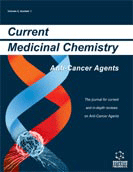Abstract
The anthracycline group of compounds are amongst the most effective chemotherapy agents currently in use for cancer treatment. They are generally classified as topoisomerase II inhibitors but also have a variety of other targets in cells. It has been known for some years that the anthracyclines are capable of forming DNA adducts, but the relevance and extent of these DNA adducts in cells and their role in causing cell death has remained obscure. When the adduct structure was solved, it became clear that formaldehyde was an absolute requirement for adduct formation. This led to a renewed interest in the capacity of anthracyclines to form DNA adducts, and there are now several ways in which adduct formation can be facilitated in cells. These involve strategies to provide the requisite formaldehyde in the form of anthracyclineformaldehyde conjugates, and the use of formaldehyde-releasing drugs in combination with anthracyclines. Of particular interest is the new therapeutic compound AN-9 that releases both butyric acid and formaldehyde, leading to efficient anthracycline- DNA adduct formation, and synergy between the two compounds. Targeted formation of adducts using anthracycline- formaldehyde conjugates tethered to cell surface targeted molecules is now also possible. Some of the cellular consequences of these adducts have now been studied, and it appears that their formation can overcome anthracyclineresistance mechanisms, and that they are more efficient at inducing apoptosis than when functioning primarily through impairment of topoisomerase II. The clinical application of the use of anthracyclines as DNA adduct forming agents is now being explored.
Keywords: anthracyclines, doxoform, epidoxoform, doxorubicin, formaldehyde, dna adducts, doxsaliform
 6
6

















